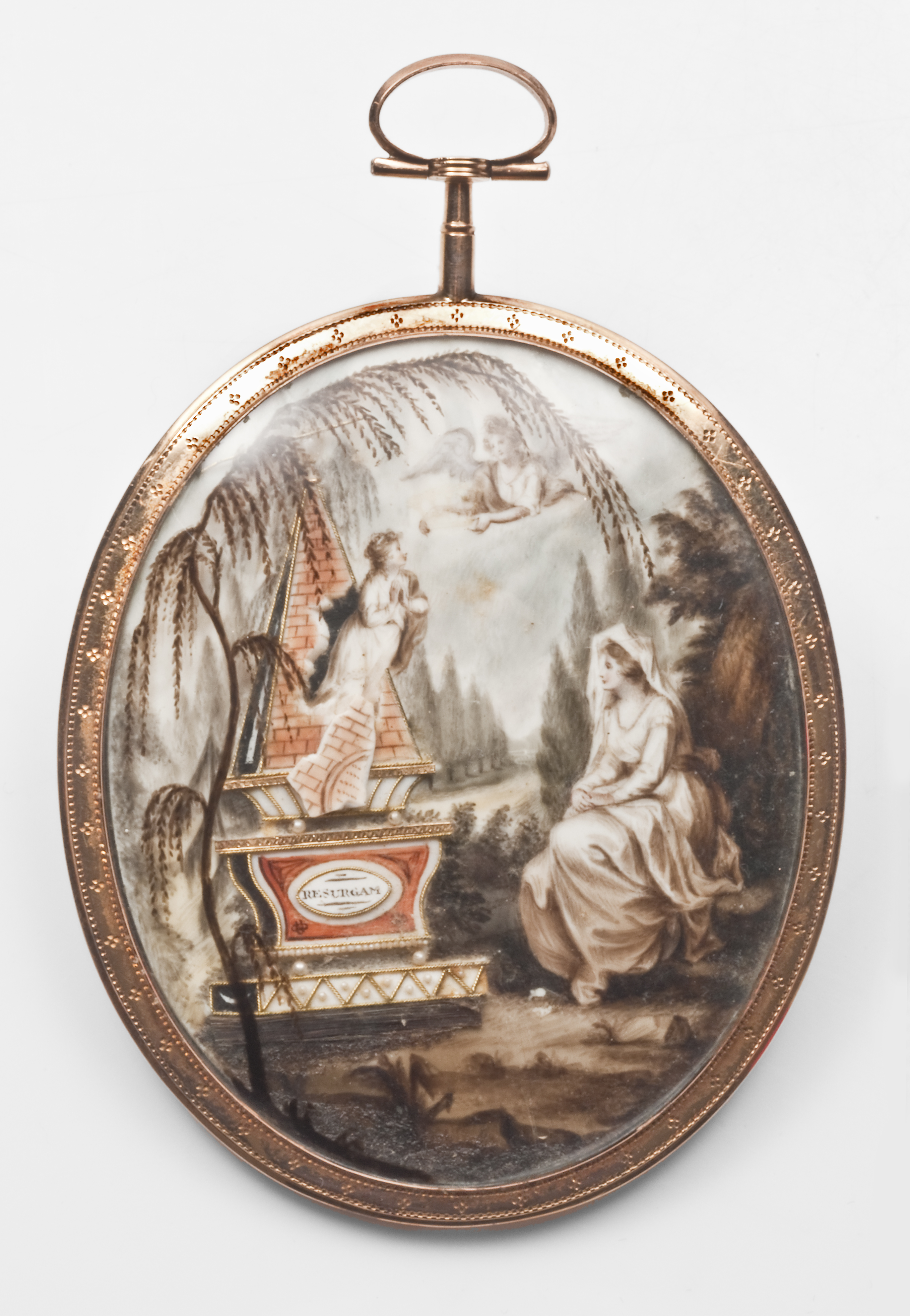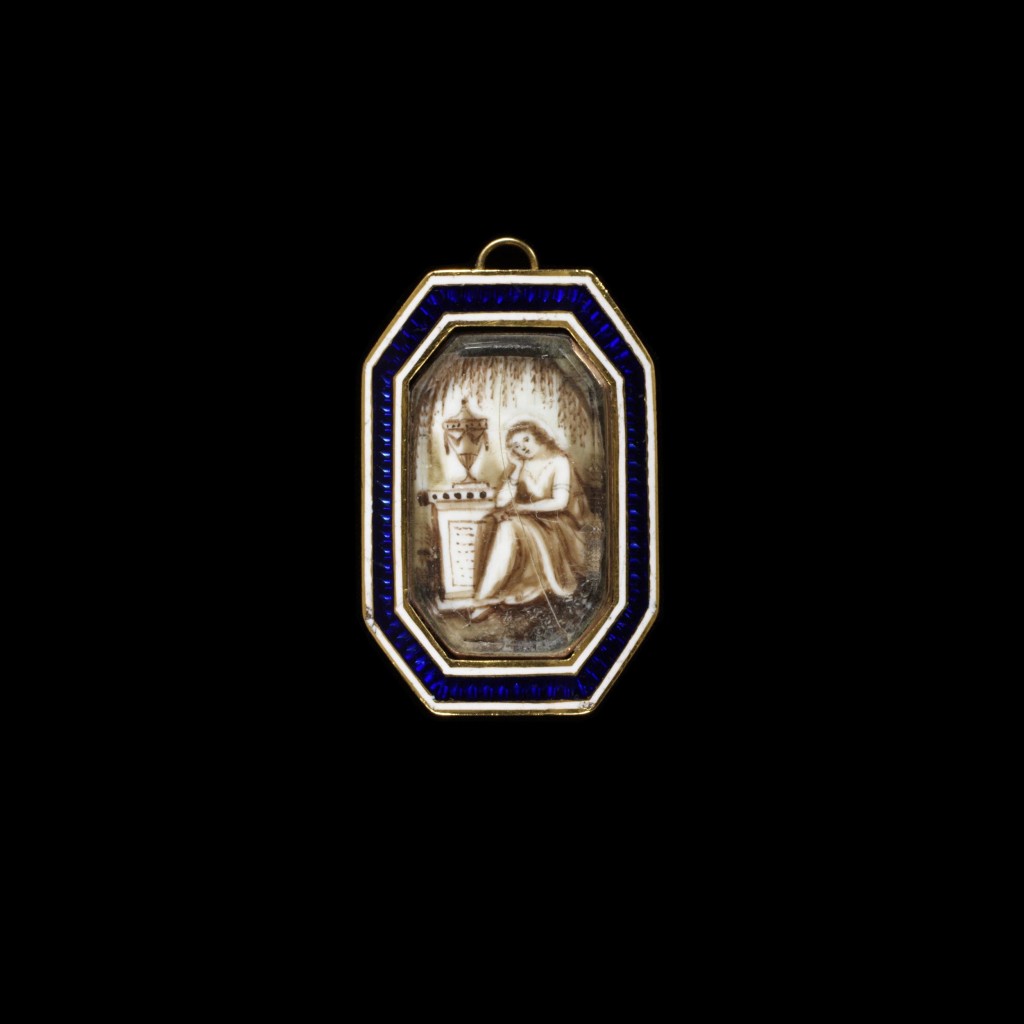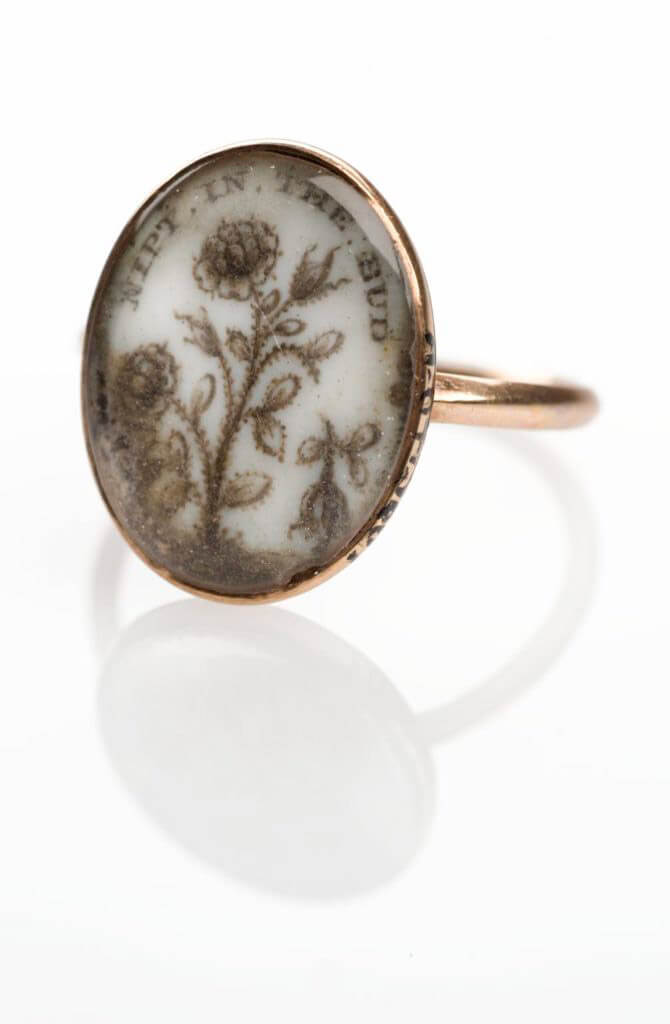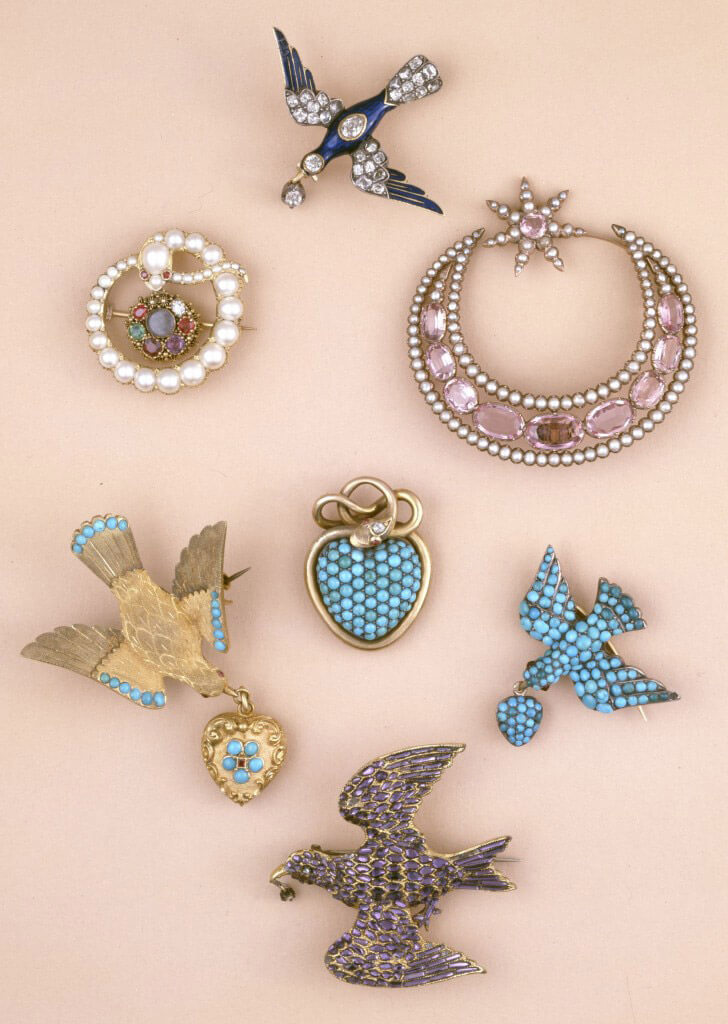Symbolism, The Woman

If you see a woman weeping at a tomb or plinth, this is considered to be the mourning ‘widow’ / ‘grieving woman’ / representation of the Madonna. The woman was the focal point of the family and considered to uphold the virtue of the house, hence why the focus of mourning has been centred on the matriarch. So, considering the woman to be a ‘widow’ is somewhat incorrect (as often many say she is the ‘weeping widow’), as a mother or female relative or friend may wear a piece depicting an idealised woman for a person other than a husband. So, would a female wearing a mourning woman be wearing an interpretation of her literal self? For the purpose of this little overview, we won’t consider the literal matriarchal paradigm throughout the 16th to 19th centuries that I would generally cover of the woman and considering that we’re only looking at the woman for the brief window of Neoclassical depictions, the woman is the Neoclassical ideal and should be considered as such. But is that ideal simply ‘grief’? Let’s take a look at some variations and what to do when in doubt.
If the woman is pointing upwards, it is a sign of faith and hope of the heavenly passage, also denoting that the soul of the loved one has departed.
If you see her hanging onto a cross, this is faith and fidelity. This can be seen in the “Rock of Ages”, written in 1763 by the Reverend Augustus Montague Toplady;
Nothing in my hand I bring,
Simply to thy Cross I cling;
Naked, come to thee for dress;
Helpless, look to thee for grace;
Foul, I to the fountain fly;
Wash me, Saviour, or I die.
The imagery is quite self explanatory and the depiction described is found more in funeralia, unless the woman is clinging to a pillar or anchor, which is more common in mourning miniatures and blends its symbolism with the direct sentiment of grief, fidelity and eternal love in the woman and inserts the symbol that she is interacting with. For example, consider that the woman is the primary/personal symbol for the mourning or sentimental piece and then look at how she is interacting with the symbols around her (secondary symbols). Is she sitting, looking at cherubs take the soul of a child off to heaven? Is she leaning or draped over an urn or tomb? Is she standing with her head turned, holding an anchor? Note the secondary symbols here and how they can represent a child, parent, husband, friend or simply the essence of an emotional allegory or sentiment. Here, she is the ideal symbol of the person and may not simply be grief itself, but the wearer can relate to her, regardless of gender.

One must also analyse the look upon the woman’s face to pay attention to her demeanour; is she crying, sad, stoic? Is she standing, sitting, looking up? Is there more than one woman on display? Many pieces were pre-designed and simply customised in the 18th century, whereas others were created originally at the prerogative of the person who had it commissioned, so the woman can often be quite naively painted or she can be one of the most detailed figures in a miniature. This is a testament to the importance of the figure in Neoclassical mourning pieces. Perhaps the woman (or women) depicted are part of a religious allegory (be it Greek, Roman or having Christian allusions), beyond the simple interpretation of the Madonna. Of course, depending on region, much of the Neoclassical symbolism was represented in different manners.
Throughout the Continent, you have a greater influx of Roman Catholic, Eastern/Oriental Orthodoxies and Protestant influences that didn’t have the more isolated Anglican control of Britain, hence the is a lot more movement for interpretation of the woman as depicted. She is a motif that has been interpreted in other ways by other cultures dating back to pre-history. From the nature that the woman is the one who bore us, the sign of fertility and as a focal point from where life springs from, her interpretation must always be considered first. Look to the depiction, note its point of origin (French, English, American, perhaps an Italian cameo) and begin interpretation of her based upon cultural relevance. This can push aside basic notions of her simply there for the purpose of mourning and shed an entirely new light upon what the woman is doing in the scene.
An example of this is perfectly captured in this French ring. On first look, the ring’s depiction is unlike the basic grieving figure that we take for granted. Simply considering this as such defies the very nature of the piece. What we can make of it, however, is she has two phrases written on her dress; upon the collar is “Longe et Prope” (far and near), and on her hem, the phrase “Mors et Vita”. Upon her head, she is crowned with myrtle (like friendship, evergreen) and pomegranate flowers (concord and internal union) and she is also barefoot (for friendship knows no inconvenience too great for it). Next to her is an elm tree, depicted dead/lifeless symbolising that one true friend does not abandon another in distress, and true friendship is based on mutual support and interdependence.

This piece reflects upon a literal representation of the woman and in this case, its intent is more of a portrait with the intent of grief, rather than the idealised ‘symbol’ of grief. Whereas, the piece shown here is an idealised symbol that can be represented for both men and women.
Now, that did take a little longer than expected, but what can I say, women are more complex than men. Remember to scrutinise each piece carefully and never take a lady for granted! Ok, back to your regular Sunday, but don’t think we’re done with the ladies just yet, no doubt if you read the site every day, I’ve covered her different aspects in some detail, but there are volumes more to write!







